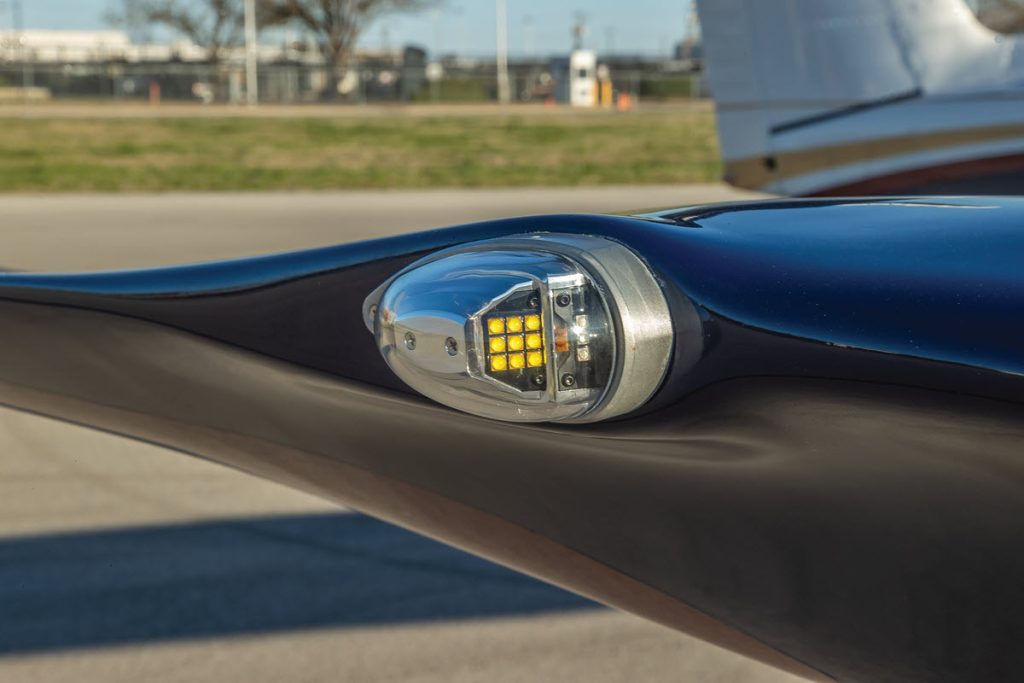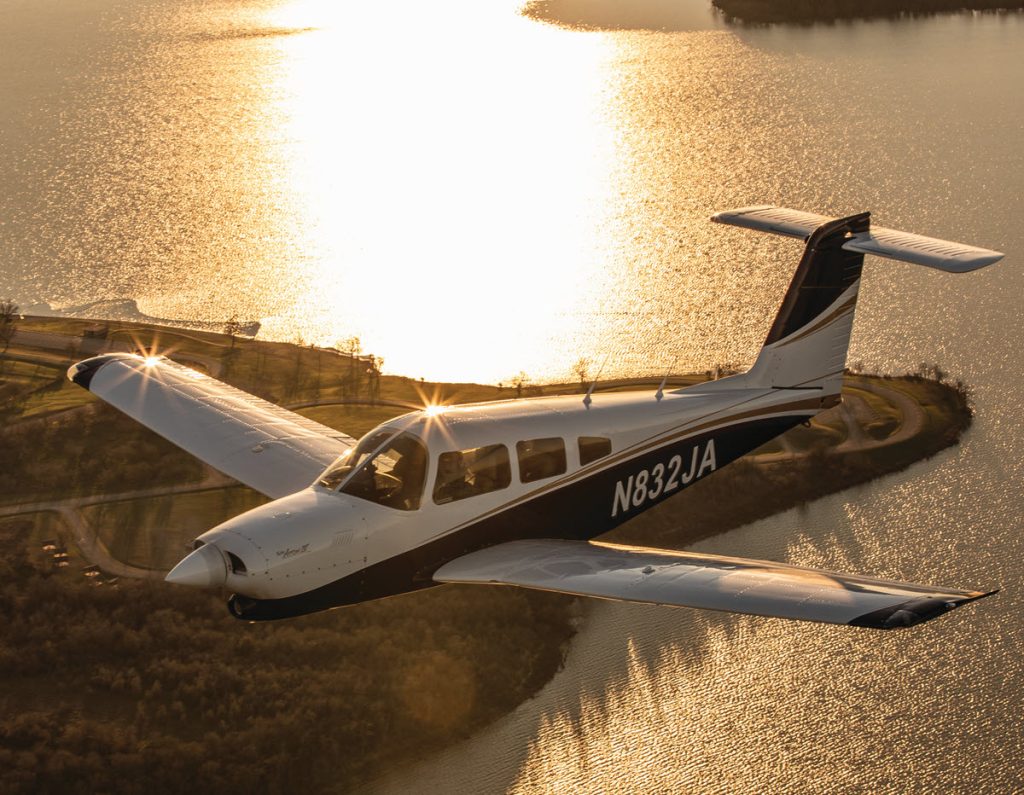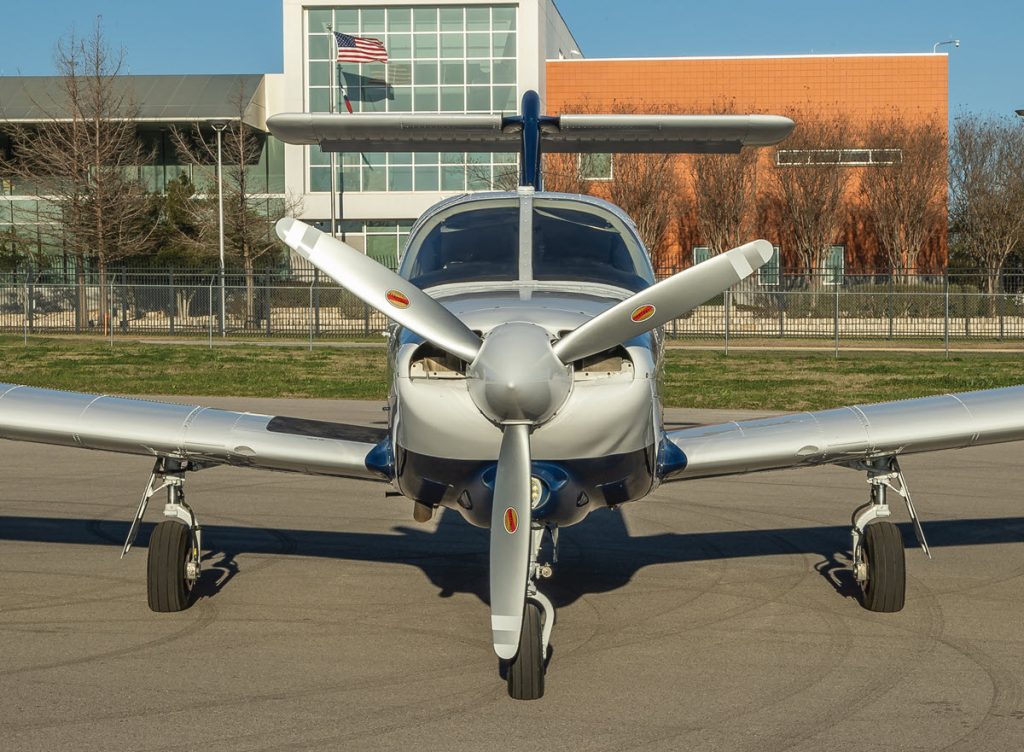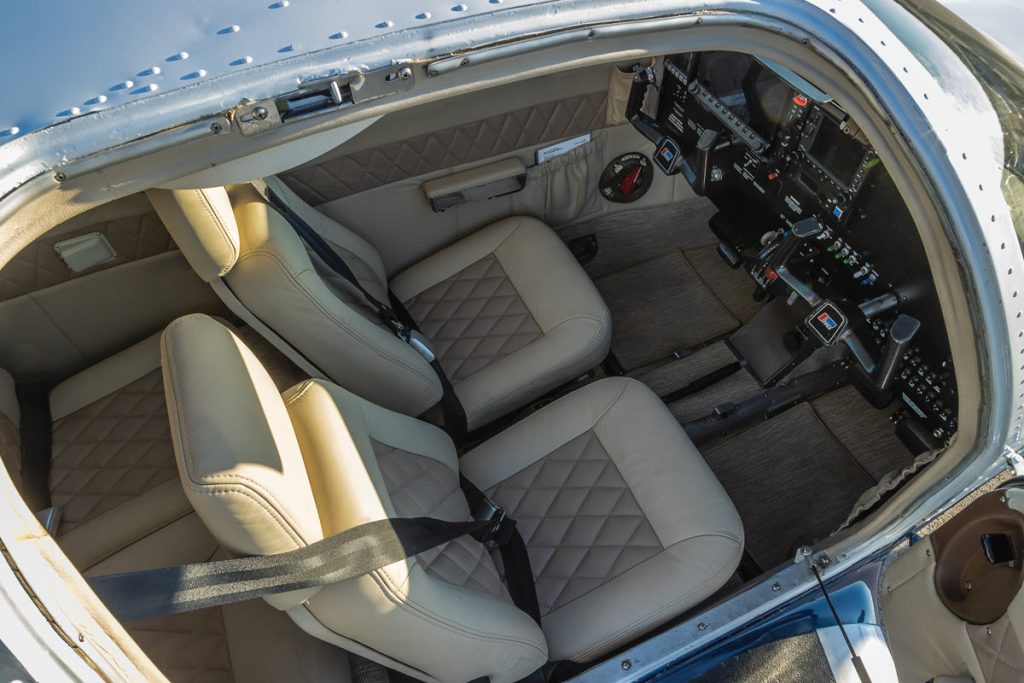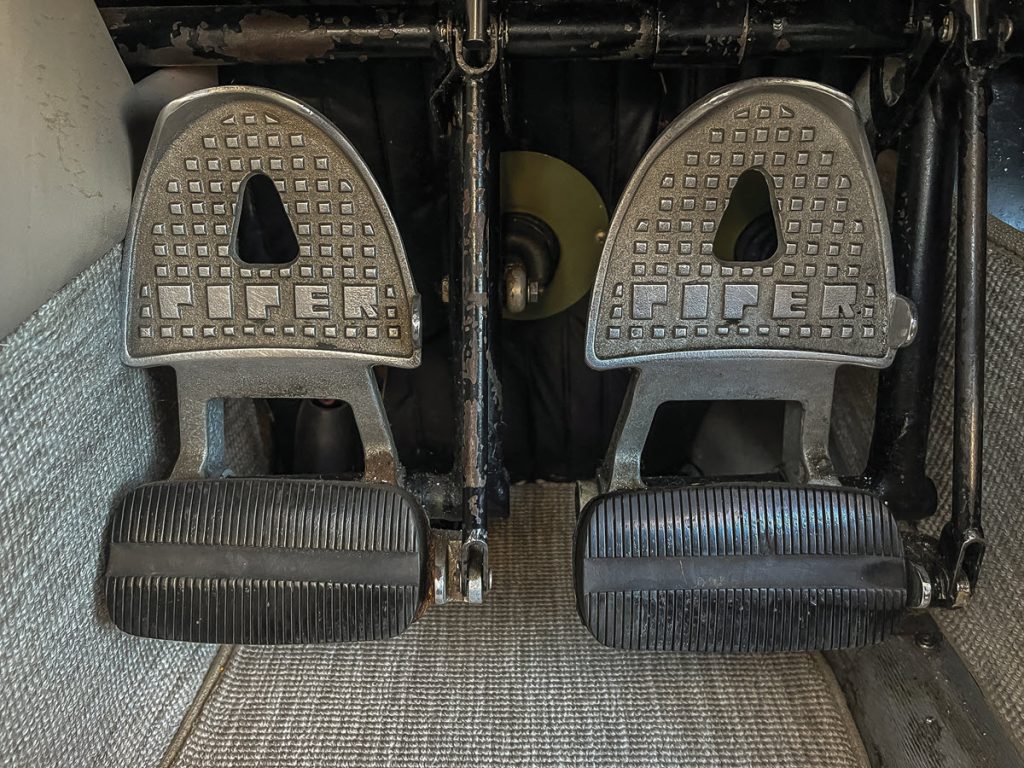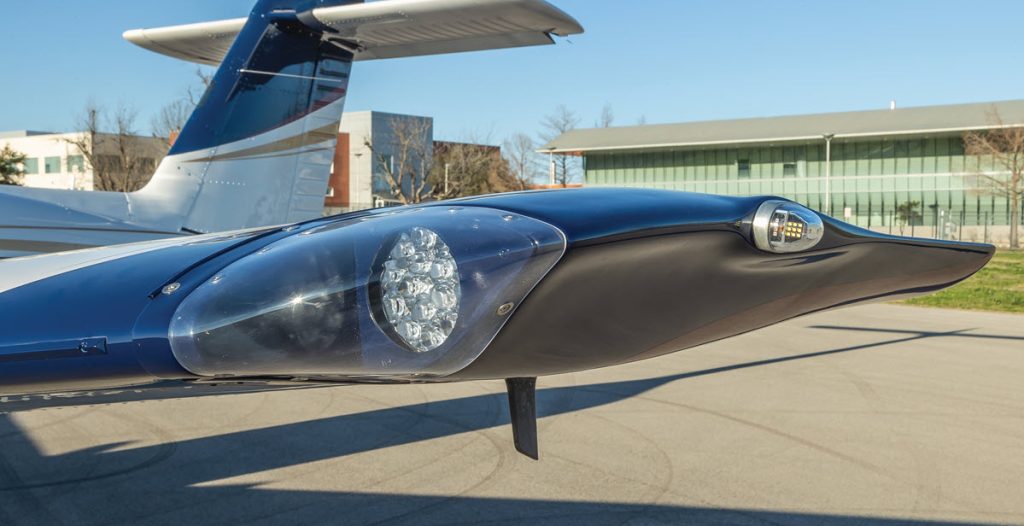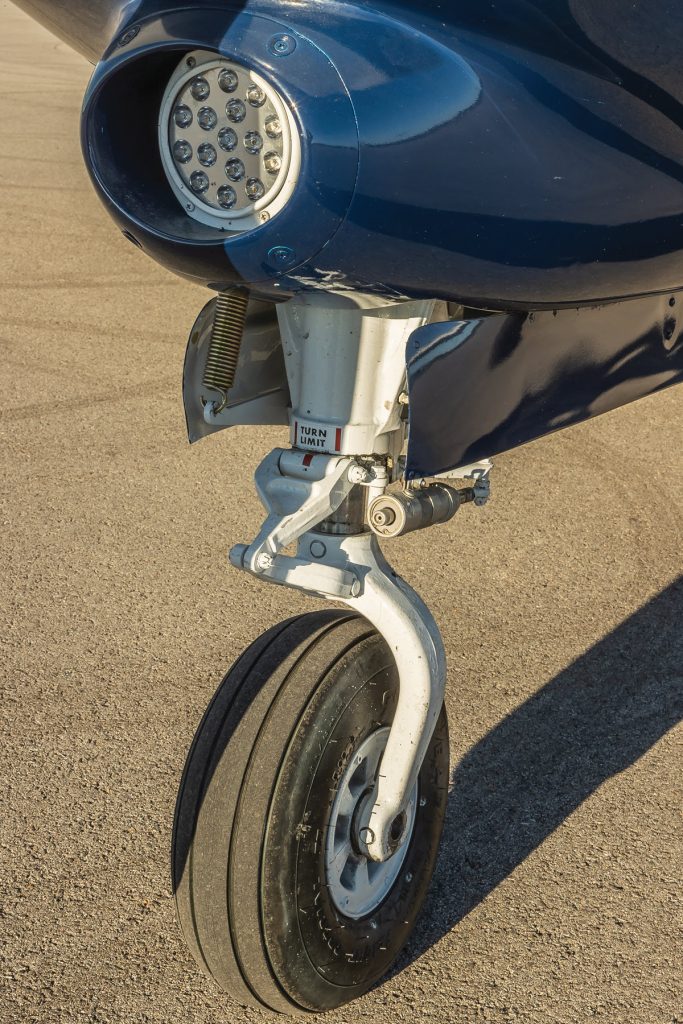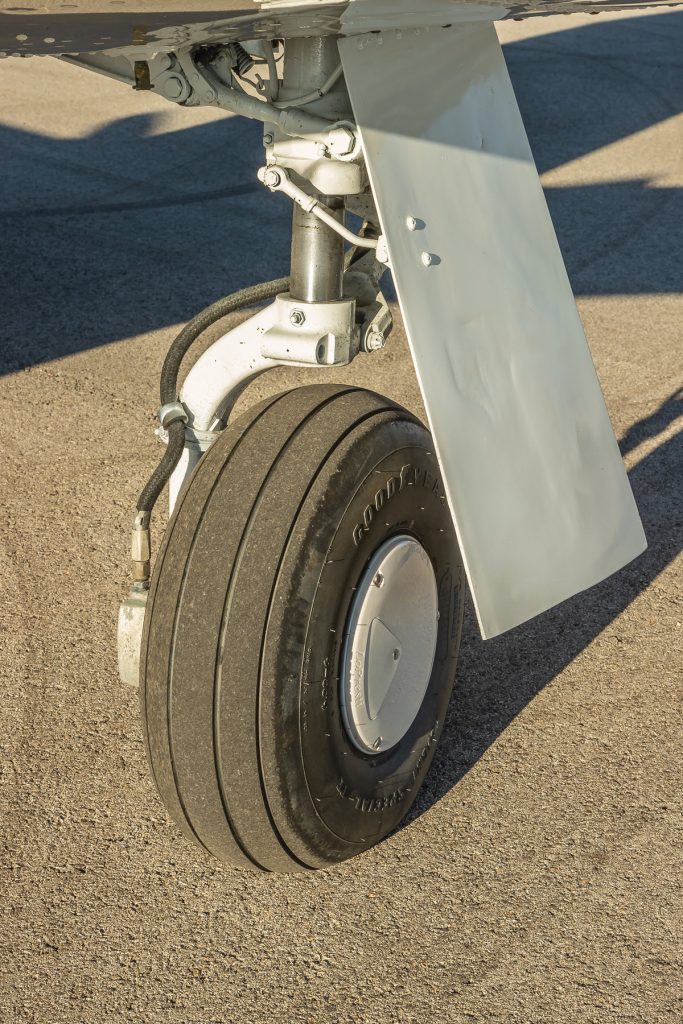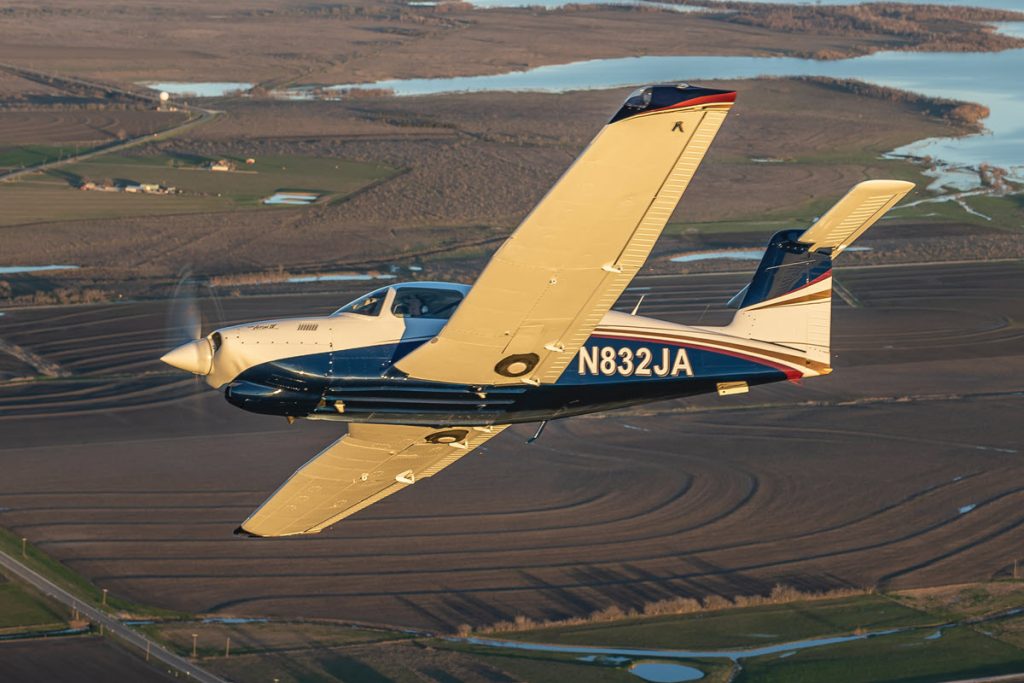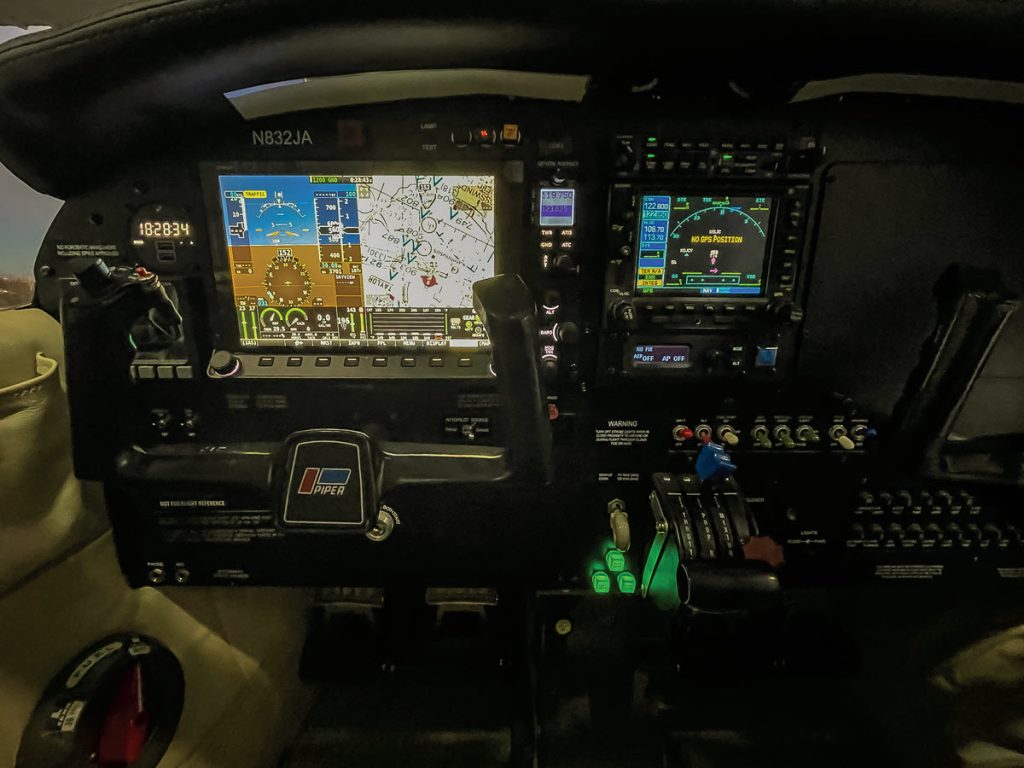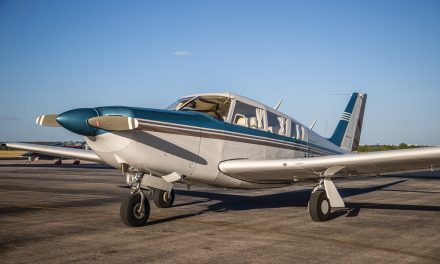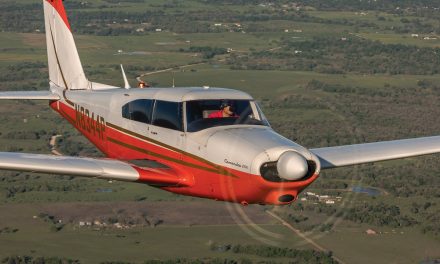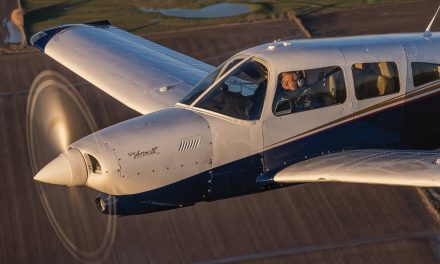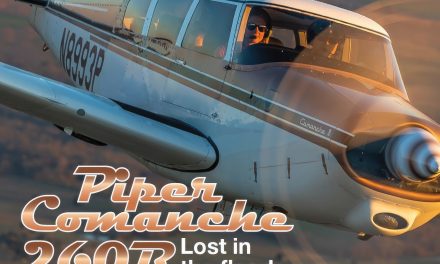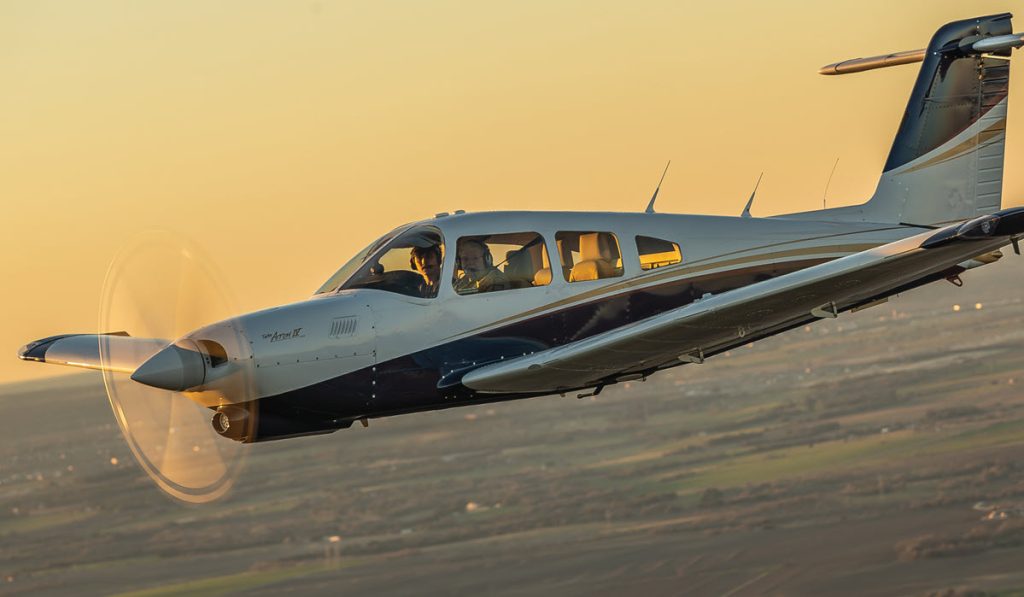
By Michelle Adserias
Harold Kennedy took his first flying lesson when he was fifteen years old. He was hooked! He might have missed this early opportunity, but his father was learning to fly and his mother, who feared her husband’s flying skills would mirror his driving skills, wanted to be sure someone else knew how to land the plane safely.
Harold learned to fly in a Cherokee 140 and developed a soft spot for Piper airplanes. On his sixteenth birthday, a year after his first flight, his parents took him to the airport where the instructor signed his student certificate and logbook and handed him the keys to go solo.
It was another year before Harold got his PPC. His first job, throughout his high school years, was spending 48 hours a week refueling planes for a Piper dealer. Minimum wage peaked at $1.65 and Harold was thrilled to get a five cent an hour raise. He used his earnings to pay for more flying lessons. On his 17th birthday, Harold got his PPL for single and multi-engine planes. With his new license, he was able to ferry airplanes from the Piper factory in Vero Beach, Florida.
He purchased his first airplane, a J3 Cub, when he was just 18 years old. By the time he got married, he was flying his fourth plane, a Cessna 182. He and his wife flew it to their honeymoon destinations in Durango, Colorado and the Grand Canyon.
The next step in Harold’s journey was refurbishing and flying corporate jets. He purchased airplanes for customers, then oversaw the needed cosmetic and avionics upgrades. In 1989, he moved into the commercial world, flying for United Airlines. He has since retired and continues flying for his own enjoyment.
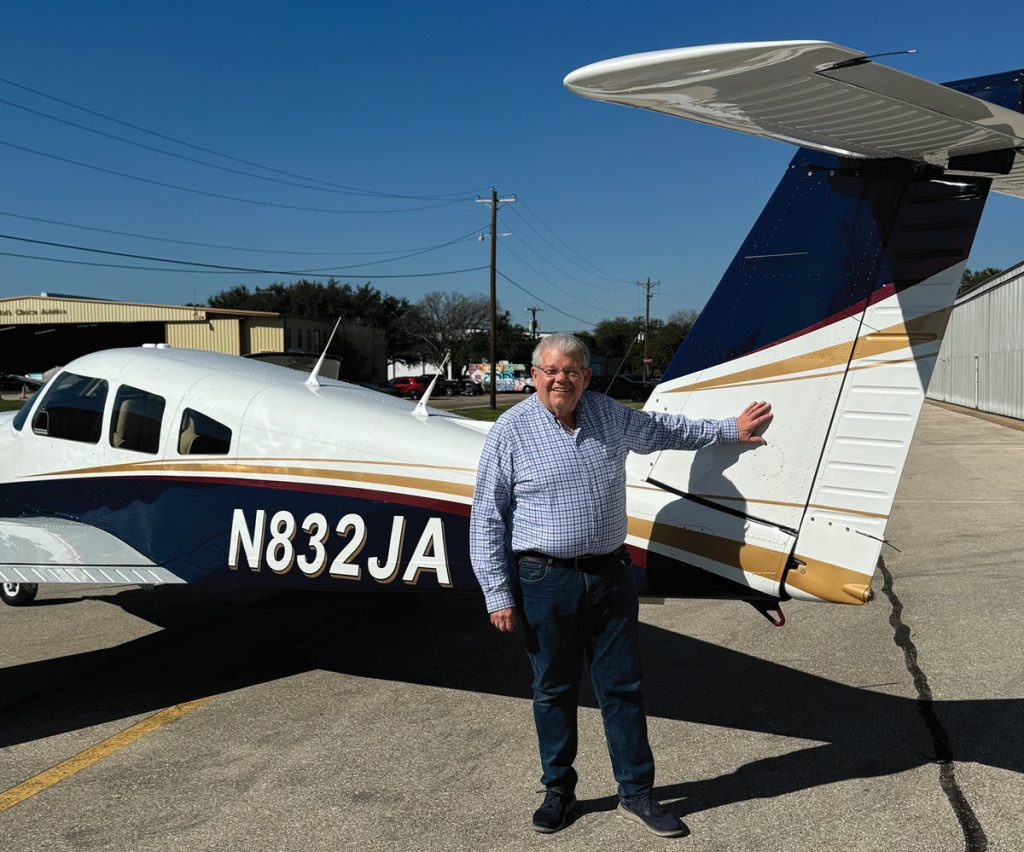
A Story to Tell
While every airplane has its own story to tell, N832JA’s story is more colorful than many. It has seen some great adventures in its lifetime.
It started life as N28529 in April 1979. Its first owner, who had it for only four years, sold it to Dr. Arthur Campbell, a US Army doctor from Virginia, in 1983. When he was just 17 years old, in May of 1945, Arthur Campbell enlisted in the Navy as a pilot. When World War II ended a few months later, he lost his slot as a pilot. So, he enrolled in medical school. After a few years in private practice, he flew N28529 to Europe to work at the Frankfurt Army Regional Medical Center in Germany. The plane changed hands and was registered in Germany, as D-EGAX. Wolfgang Hamann was the next owner.
The plane had traveled Europe for 30 years, and it was now time for it to return home to the United States. Wolfgang Hamann had flown another Turbo Arrow IV around the world. His long-range plan was to take this plane on a similar journey. But first, he did a tour of the United States.
According to the logbook, Wolfgang made six fuel stops before arriving in Presque Isle, Maine, sixteen days later; one in Scotland, one in Iceland, two in Greenland and two in Canada. The longest leg of his journey was 6.9 hours, but he averaged 5.5 to 6 hours per leg.
Once in the United States, he flew across the country to Bellingham, Washington, down to Redding, California, back to Colorado Springs, down to New Orleans, then across to Bartow, Florida. Harold and Wolfgang had mutual friends at an aircraft maintenance facility, Amphibians Plus, that specializes in Lake aircraft. Wolfgang owned a Lake Amphibian at one time and stopped by for a visit. Sadly, health concerns forced him to return to Germany and leave D-EGAX behind. There would be no around the world flight for this airplane.
When Wolfgang decided to sell the plane, Amphibians Plus did an annual inspection. A new Certificate of Airworthiness was issued with a new registration number; N832JA. It then sat in storage for several years.
A Story to Tell
While every airplane has its own story to tell, N832JA’s story is more colorful than many. It has seen some great adventures in its lifetime.
It started life as N28529 in April 1979. Its first owner, who had it for only four years, sold it to Dr. Arthur Campbell, a US Army doctor from Virginia, in 1983. When he was just 17 years old, in May of 1945, Arthur Campbell enlisted in the Navy as a pilot. When World War II ended a few months later, he lost his slot as a pilot. So, he enrolled in medical school. After a few years in private practice, he flew N28529 to Europe to work at the Frankfurt Army Regional Medical Center in Germany. The plane changed hands and was registered in Germany, as D-EGAX. Wolfgang Hamann was the next owner.
The plane had traveled Europe for 30 years, and it was now time for it to return home to the United States. Wolfgang Hamann had flown another Turbo Arrow IV around the world. His long-range plan was to take this plane on a similar journey. But first, he did a tour of the United States.
According to the logbook, Wolfgang made six fuel stops before arriving in Presque Isle, Maine, sixteen days later; one in Scotland, one in Iceland, two in Greenland and two in Canada. The longest leg of his journey was 6.9 hours, but he averaged 5.5 to 6 hours per leg.
Once in the United States, he flew across the country to Bellingham, Washington, down to Redding, California, back to Colorado Springs, down to New Orleans, then across to Bartow, Florida. Harold and Wolfgang had mutual friends at an aircraft maintenance facility, Amphibians Plus, that specializes in Lake aircraft. Wolfgang owned a Lake Amphibian at one time and stopped by for a visit. Sadly, health concerns forced him to return to Germany and leave D-EGAX behind. There would be no around the world flight for this airplane.
When Wolfgang decided to sell the plane, Amphibians Plus did an annual inspection. A new Certificate of Airworthiness was issued with a new registration number; N832JA. It then sat in storage for several years.
Upgrades and Alterations
N832JA needed quite a bit of attention. Harold’s plan was to empty the interior, send it out for a new paint job while the interior was out, then have a new panel installed. Things didn’t go exactly as planned. Central Texas Avionics suggested doing the avionics before the paint job, in case they had to move an antenna or other components. When the avionics were finished, the paint shop wasn’t free. Because Harold didn’t want the annual inspection to expire while it was being painted, he had another inspection done.
Despite the timetable glitches, all the needed upgrades and alterations came together in the end. Once the interior was removed, Harold replaced the original fiberglass insulation with SoundEX soundproofing and insulation, and complied with the Eddy Current inspection per the Piper SB and Wing Spar AD 2020-26-16.
At a friend’s recommendation, Harold ordered burn-tested leathers, carpet and headliner materials from Douglass Interior Products. The interior shop even covered the plastic window frames with the same fabric as the headliner. Harold also put in Rosen Sun Visors and a door steward. New seat belts from Aircraft Belts are still on the short list.
Next, Harold tackled the avionics. He originally planned to install a Garmin G3X but there was a six-month wait. Instead, Harold had a Dynon HDX, with its own GPS, installed. Then he added the Dynon Com and transponder with a GNS-530W, an upgrade from the GNS-430 that was in the plane. The Dynon Autopilot was not approved for the Turbo Arrow, so he went with the Bendix/King AeroCruze 100 Autopilot instead.
There was one kink Central Texas Avionics had to work out of the system. The Dynon HDX did not “talk” directly to the AeroCruze 100 Autopilot, so the crew added a switch that allows Harold to choose either the Dynon HDX or Garmin GNS-530W for inputs.
“It works great now,” Harold shared. “I can pre-select an altitude or a vertical speed on the Dynon HDX and it will communicate that information to the autopilot.”
Harold also installed the Garmin GMA-345 audio panel and had all the plastic switches and circuit breakers replaced while they were making the custom panel. The panel was cut with room for a second HDX 10” display, the next item which Harold plans to add.
With the interior updates completed, Harold turned his attention to some updates on the airplane’s exterior. The plastic wing tips and rudder tips had cracks that needed repair before the paint job. Harold was following a couple of plane renovations in PIPERS magazine. He followed a Cherokee Six owner’s cue and got all new fairings from Knots 2U, including the upswept wingtips with WigWag LED lights. Then he replaced the windows and windshield with Knots 2U Solar Control windows for better UV protection.
The final step was the new paint job. Harold chose the Piper M500 paint scheme for N832JA. Once it was repainted, the faded Piper medallion on the side of the fuselage, just aft of the cabin door, looked even worse. Harold commented, “I thought about having someone air brush it, but AirParts West came to the rescue and located a new medallion.”
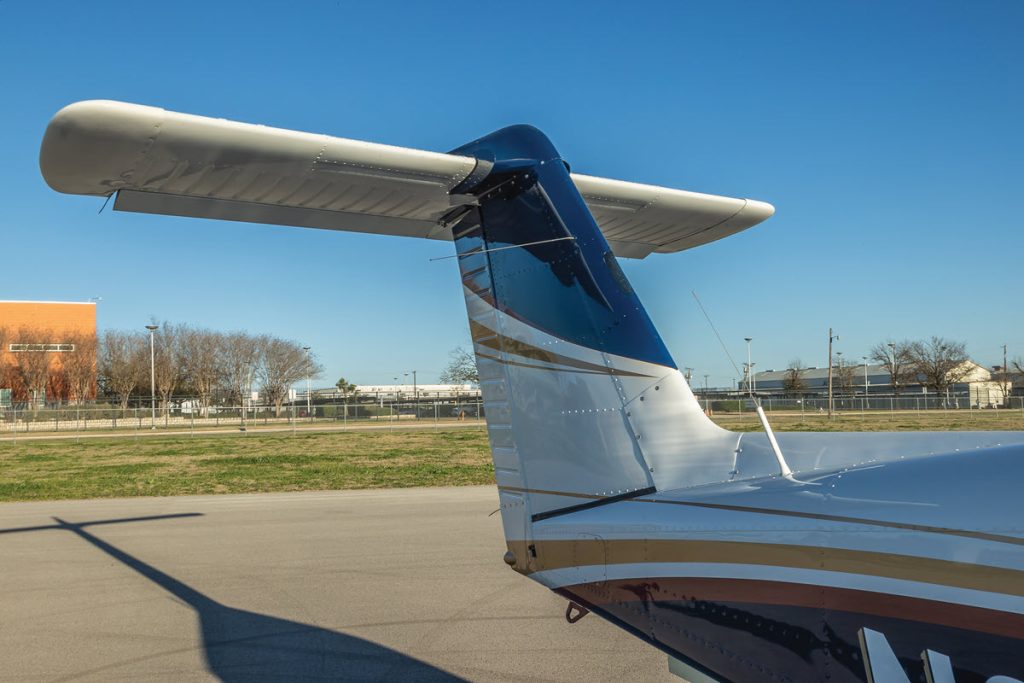
TURBO ARROW IV IMPROVEMENTS AND MODIFICATIONS
- Dynon SkyView HDX 10″ Touchscreen Display
- Dynon SV-BAT-320 Backup Battery
- Dynon EFIS-D10A Standby Flight Display w/Backup Battery
- Dynon SV-COM-T8 Com Transceiver
- Dynon SV-XPNDR-261 Transponder w/ADS-B out
- Dynon SV-ADS-B In Traffic and Weather Receiver
- Dynon SV-EMS-220 Engine Monitoring System
- Garmin GMA-345 Audio Panel w/Bluetooth and 3D Audio
- Bendix/King AeroCruise 100 Autopilot
- Custom Instrument Panel with provisions for second Dynon SkyView HDX 10″ Touchscreen Display.
- Solar Control ¼” Windshields from Knots 2U
- Solar Control 3/16” Side Windows w/Pilot and Co-Pilot Vent Windows from Knots 2U
- Upswept Wing Tips with LED WigWag / Landing Lights from Knots 2U
- Stabilator and Rudder Tips from Knots 2U
- Wing Root Fairing Kit from Knots 2U
- Hub Caps with access door from Knots 2U
- Cabin Door Seal from Knots 2U
- Baggage Door Seal from Knots 2U
- Whelen Wing Tip LED Strobe and Navigation Lights
- Kannad 406-AF ELT
- Mid-Continent MD93 Digital Clock w/dual USB ports
- Glare Shield LED Lighting
- Bogart Metal Battery Box
- Cabin Door Steward
- Rosen Sunvisors
- All Rocker Switches replaced with Mil-Spec Toggle Switches
- All Circuit Breakers replaced with Klaxon Circuit Breakers
- New Paint in current Piper M500 4-color Paint Scheme
- New Two Tone Beige Leather Interior
- Memory Foam Seat Cushions by Hi Tech Foams
- SoundEX Soundproofing and Insulation
- New Nose Gear Springs
- New Piper Medallion
Flying and Maintaining N832JA
Because the plane was still being renovated, Harold only logged about 20 hours in it over the past year but typically logs 40-50 hours in flight each year.
Harold enjoys the versatility of his Turbo Arrow IV. Because it is turbo-charged, it can operate at higher density altitude airports. Though his home airport is only 600 feet DSL, during the summer months the DA is often over 3,000 feet. Additionally, this airplane is suited to flying at higher altitudes to take advantage of the winds or staying at lower altitudes to avoid headwinds. Wolfgang’s around-the-world flight in a Turbo Arrow IV is a testament to the plane’s capabilities.
Harold noted that N832JA’s fuel burn is less than half of the fuel burn on the Barron he’s been flying, while the speed is only 20 knots less. “The fuel burn at 75% power at 10,000 feet is 13.7 gph, with a TAS of 150 knots.” He typically uses lower power settings with a fuel burn of 10-11 gph. In addition to fuel costs, Harold budgets about $1,000 per month for maintenance, insurance and hangar fees.
The more he flies, the more Harold appreciates his new panel. “The Dynon HDX offers a wealth of information: TAS, winds aloft, density altitude, and vertical speed pre-select to name a few.”
So far, Harold has not run into any maintenance issues. The parts he has needed have been readily available through AirParts West. The only thing that caught Harold and other Piper owners by surprise was the recent AD Note for the Turbo Clamps, AD 2023-09-09. Though the necessary clamps were on back order, a local mechanic, who also owns a Turbo Arrow, helped him track down two clamps; one for himself and one he installed for Harold within a week.
According to Harold, the most important aspect of maintenance and care is listening to your plane. “It will tell you when something needs attention.” It may make a different noise, or the EGT or CHT may be higher than normal. A good engine analyzer helps pinpoint the problem causing the changes and will help you troubleshoot. Once your mechanic finds the problem, give him time and space to work. It’s better to spend the night somewhere than to rush a repair. “Always err to the side of safety.”
The Turbo Arrow IV’s T-Tail Design
One special feature of this airplane is its T-tail design, which has not always been well-received by pilots. According to Harold, it has some pros and cons.
“It does take some practice to avoid over-rotating on takeoff. I am guilty of getting a little extra speed on the takeoff roll, plus not wanting to over boot the engine, I add the power slowly and don’t use the full manifold pressure for every take-off.”
His conclusion? The Arrow IV isn’t as well-suited for short airfields as, say, the Dakota. Checking and removing frost and ice from the stabilator can also be challenging. If you live in a colder climate, a hangar will help eliminate this problem.
When asked what he specifically likes about N832JA’s T-tail design, Harold said, “I love the extra room in the hangar! With the T-tail, it’s much easier to walk around, especially if you have a work bench or equipment stored in the hangar.”
The rest of this article and the specifications for this plane can be seen only by paid members who are logged in.Have a website login already? Log in and start reading now.
Never created a website login before? Find your Customer Number (it’s on your mailing label) and register here.
JOIN HERE
Still have questions? Contact us here.

